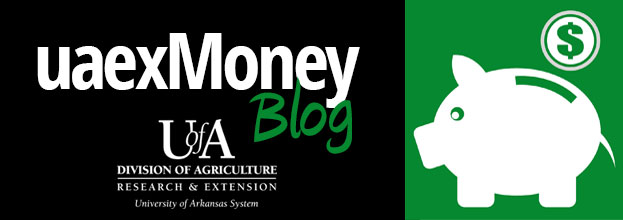
UAEX Money
Preparing to File Taxes
Tax filing season is open. Here are a few things to consider as you prepare to file this year.
Be aware of changes for credits and deductions.
For tax year 2022 some tax credits that were expanded in 2021 will return to 2019 levels. This means that some tax filers could receive a smaller refund than last year. Changes include amounts for the Child Tax Credit (CTC), Earned Income Tax Credit (EITC) and Child and Dependent Care Credit.
- Those who got $3,600 per dependent in 2021 for the CTC will, if eligible, get $2,000 for the 2022 tax year.
- For the EITC, eligible taxpayers with no children who received roughly $1,500 in 2021 will now get $500 in 2022.
- The Child and Dependent Care Credit returns to a maximum of $2,100 in 2022 instead of $8,000 in 2021.
Unlike 2020 and 2021, there were no new stimulus payments for 2022 so taxpayers should not expect to get an additional payment in their 2023 tax refund.
During COVID, taxpayers were able to take up to a $600 charitable donation tax deduction on their tax returns. However, for tax year 2022, taxpayers who don’t itemize and who take the standard deduction, won’t be able to deduct their charitable contributions.
If you bought a new, qualified plug-in electric vehicle (EV) in 2022 or before, you may be eligible for a clean vehicle tax credit.
Get your refund fast.
One of the fastest ways to get your refund is to file electronically and use direct deposit. You can have your tax refund deposited in up to 3 accounts. Have at least part of your refund deposited into a savings account. Use IRS form 8888 for direct deposit.
Avoid using advance refund loans which often have high fees.
Save money by filing for free.
Many tax filers qualify to file free. This means you can keep more of your refund because you don’t have to pay a tax-preparation service.
VITA (Volunteer Income Tax Assistance):
- Your income is $60,000 or less, or
- You are 60 years old or older, or
- You have a disability or speak limited English.
- Find VITA Locations https://irs.treasury.gov/freetaxprep/
AARP Foundation Tax-Aide:
- You are age 50 or older, or
- You have low to moderate income.
- Find AARP Tax-Aide locations https://www.aarp.org/money/taxes/aarp_taxaide/locations.html
MyFreeTaxes:
- Your income is $73,000 or less.
- https://myfreetaxes.com
IRS Free File:
- If your income is $73,000 or less, you can access guided return preparation assistance.
- If your income is greater than $73,000 you can access fillable forms to prepare your own return without assistance.
- https://www.irs.gov/filing/free-file-do-your-federal-taxes-for-free
MilTax:
- Free software and support for military tax filers.
- https://www.militaryonesource.mil/financial-legal/taxes/miltax-military-tax-services
Organize records for tax time.
Whether you are doing your own taxes, using a paid tax preparation service, or using one of the free file options; you will need to gather the following information:
- Birth dates and social security numbers for you, your spouse and dependents on the tax return
- Wage and earning statements (Form W-2, W-2G, 1099-R,1099-Misc) from all employers
- Interest and dividend statements from banks (Forms 1099)
- Health Insurance Exemption Certificate, if received
- A copy of last year’s federal and state returns, if available
- Bank account routing and account numbers for direct deposit such as a blank check
- Total paid for daycare provider and the daycare provider's tax identifying number such as their Social Security number or business Employer Identification Number
- Forms 1095-A, B and C, Health Coverage Statements
- Copies of income transcripts from IRS and state, if applicable
- If using a free or paid tax preparation service, you will need to show proof of identification such as a driver’s license.
- If married and filing jointly, both you and your spouse will need to sign the tax return.